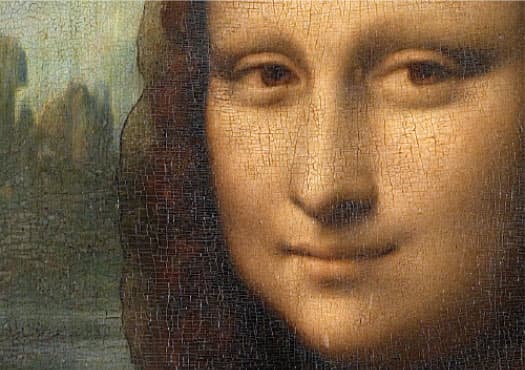
Migrations
Understanding ancient civilisations
PREHISTORIC ROCK ART
The major advantage of AMS is that it can deal with very small samples which could not so far be dated, owing to the fact that they were too small, or too valuable to be exposed to any significant damage: thus, less than a milligram of carbon is enough for a measurement, or more than one thousand times less than with the conventional technique. Whereas this later is based on measuring the beta radioactivity of 14C, AMS uses a particle accelerator coupled with mass spectrometers to isolate a beam of 14C atoms and count them individually in an ionisation chamber.
Until the advent of AMS, studying the evolution of rock art was based on stylistic analysis of the images or dating of the remains found in the vicinity of the decorated walls and assumed to be contemporary with the traces, meaning that its chronology remained uncertain. As of 1985, the Climate and Environmental Sciences Laboratory (CEA/CNRS/UVSQ/IPSL) together with teams of archaeologists, developed direct dating of drawings and painting made with charcoal on the walls of prehistoric painted caves. From 1990 to 2001, these analyses were carried out on the Tandetron, France’s first AMS installation on the CNRS campus in Gif-sur-Yvette [1][1] Arnold M., Bard E., Maurice P., Duplessy JC. 1987. 14C dating with the Gif-sur-Yvette Tandetron accelerator: status report. Nuclear Instruments and Methods in Physics Research B 29: 120–3.. Since 2003, dating has been carried out on ARTEMIS (AMS dedicated to research for Earth sciences, the environment and museology) located in the Carbon 14 Measurement Laboratory in Saclay [2][2] Cottereau E., Arnold M., Moreau C., Baqué D., Bavay D., Caffy I., Comby, Dumoulin JP., Hain S., Perron M., Salomon J., Setti V. 2007. Artemis, the new 14C AMS at LMC14 in Saclay. France. Radiocarbon 49 (2): 291-299..
To date, more than twenty painted caves in France and Spain have been dated. The results obtained, more particularly for the caves at Niaux, in France (Ariège), and Altamira and El Castillo, in Spain (Cantabria region), were in line with the chronology based on the stylistic data and confirmed that they belonged to the Magdalenian culture (17,000 to 11,000 years). However, the great benefit of AMS is to have revealed the existence of rock art far earlier than Magdalenian, confirming the hypotheses put forward by several archaeologists and the existence of significant artistic activity as early as the Gravettian period between 27,000 and 22,000 years [3][3] Lorblanchet, M. Les Grottes Ornées de la Préhistoire (Errance, Paris, 1995).. Dating of the paintings and drawings in the caves of Cougnac and Pech-Merle (Lot) or Cosquer (Bouches-du-Rhône) showed that they had been made between 27,000 and 23,000 years before present, or more than 10,000 years before the Magdalenian [4][4] Valladas H., Clottes J., Geneste J-M., Garcia M. A., Arnold M., Cachier H., Tisnérat-Laborde N., Evolution of prehistoric cave art, Nature 413, 4 October 2001, p. 479 paintings!
These Gravettian dates (about 25-27,000 years) first of all set an age record for Palaeolithic paintings. However, in 1995, 14C ages several thousand years older were obtained in drawings in the Chauvet-Pont d’Arc cave (Ardèche), pushing back the birth of Palaeolithic art even further into the past [5][5] Clottes J., Chauvet J-M, Brunel-Deschamps E., Hillaire C., Daugas J-P, Arnold M., Cachier H., Evin J., Fortin P., Oberlin C., Tisnerat N., Valladas H., « Les peintures préhistoriques de la Grotte Chauvet-Pont d’Arc (Ardèche, France) : datations directes et indirectes par la méthode du radiocarbone », Comptes Rendus de l’Académie des Sciences de Paris,.320 (série II a), 1995, p 1133-1140.. This dating work in Chauvet on representations of rhinoceroses, horses, aurochs, megaceros and bisons contradicted the theories based on stylistic studies: they showed that rock art did not evolve progressively from a rudimentary phase in the early Upper Palaeolithic, until it blossomed fully at the time of Lascaux but that, as of the Aurignacian, at the time when modern man was widespread throughout Western Europe, the artists were absolute masters of painting techniques. This initial work in the Chauvet-Pont d’Arc cave also revealed the existence of a second period of occupation several thousand years after the first [4][4] Valladas H., Clottes J., Geneste J-M., Garcia M. A., Arnold M., Cachier H., Tisnérat-Laborde N., Evolution of prehistoric cave art, Nature 413, 4 October 2001, p. 479 [5][5] Clottes J., Chauvet J-M, Brunel-Deschamps E., Hillaire C., Daugas J-P, Arnold M., Cachier H., Evin J., Fortin P., Oberlin C., Tisnerat N., Valladas H., « Les peintures préhistoriques de la Grotte Chauvet-Pont d’Arc (Ardèche, France) : datations directes et indirectes par la méthode du radiocarbone », Comptes Rendus de l’Académie des Sciences de Paris,.320 (série II a), 1995, p 1133-1140..
Since 1995, more than a hundred 14C dating operations have been carried out in this cave, on animal representations, on black spots or traces on the walls and on samples of charcoal found on the floor. The statistical analysis of all the dating operations confirmed the two periods of occupation of the cave, specifying their respective durations [6][6] Quiles A., Valladas H., Bocherens H., Delqué-Količ E., Kaltnecker E., van der Plicht J., Delannoy J.J., Feruglio V., Fritz C., Monney J., Philippe M,, Tosello G., Clottes J., and Geneste J.M., PNAS April 26, 2016 113 (17) 4670-4675.. The older period (about 37,000-34,000 years) is the most extensively documented: it comprises animal representations and most of the charcoal collected from the floor. The second period (31,000-29,000 years) is characterised by black spots and some charcoal. The men who entered the cave during this second period passed through the same chambers as their ancestors, observing the drawings that they had left there several thousand years previously.
The example of the Chauvet-Pont d’Arc cave shows how AMS has changed our knowledge of Palaeolithic art. At present, the main limiting factor in the dating of rock art is the scarcity of organic pigment. In 2015, the installation of the ECHoMICADAS in the LSCE, a new-generation compact SMA, which enables the mass of carbon needed for the analysis to be reduced to a few tens of micrograms, is generating considerable hope, opening up new prospects for research in the field of prehistoric art. n
 More (4 min.)
More (4 min.)

Migrations

Pigments and metals

New applications